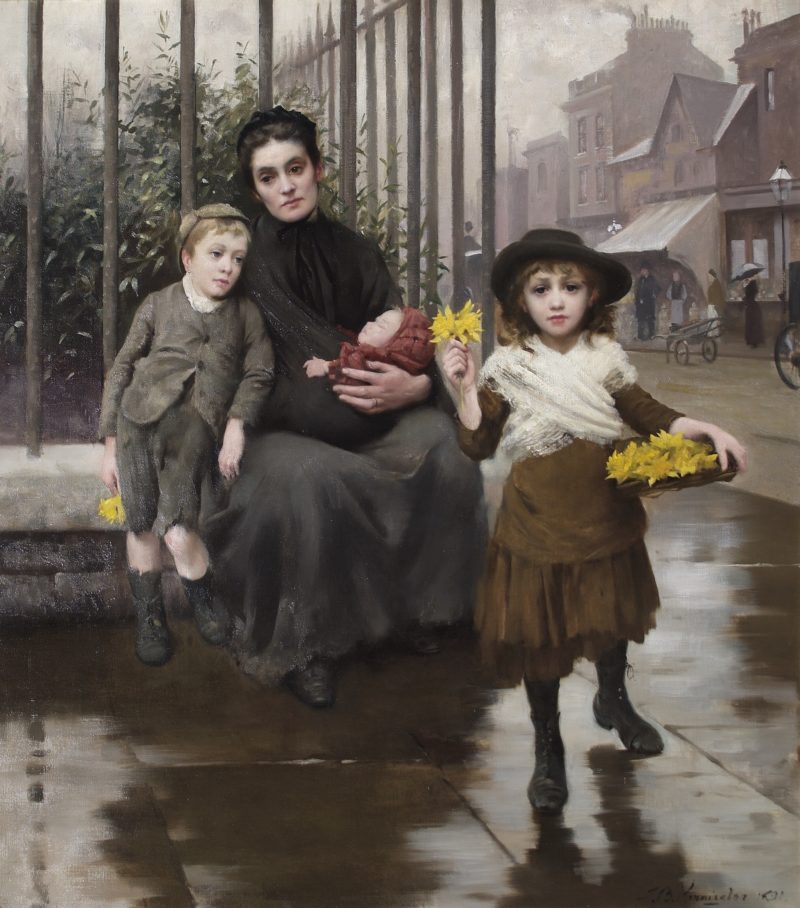About the artist and the painting
Kennington was born in Grimsby, Lincolnshire and studied at the Liverpool School of Art, the Royal College of Art and later in Paris. He settled in London where he became known for portraying scenes of upper-class life and of idealised domestic interiors with mothers and children. This painting is one of a series in which Kennington turns instead to social realism, showing the extreme suffering caused to families by poverty. Others in the series are entitled Homeless, Orphans and Widowed and Fatherless.
There is an earlier, larger version of The Pinch of Poverty in the Art Gallery of South Australia.
Indian connections
This painting was left to the Hospital by a lawyer and civil servant who had worked in the Madras region of British India. The Hospital had connections to India, Bangladesh and Pakistan throughout its history, through Governors who invested or played a direct role in the East India Company, or were involved militarily or administratively in British India. We have also identified a small number of children of Indian descent admitted to the Hospital in the eighteenth and early nineteenth century. Some former pupils, who entered the Hospital in the twentieth century, served in the army in India.

